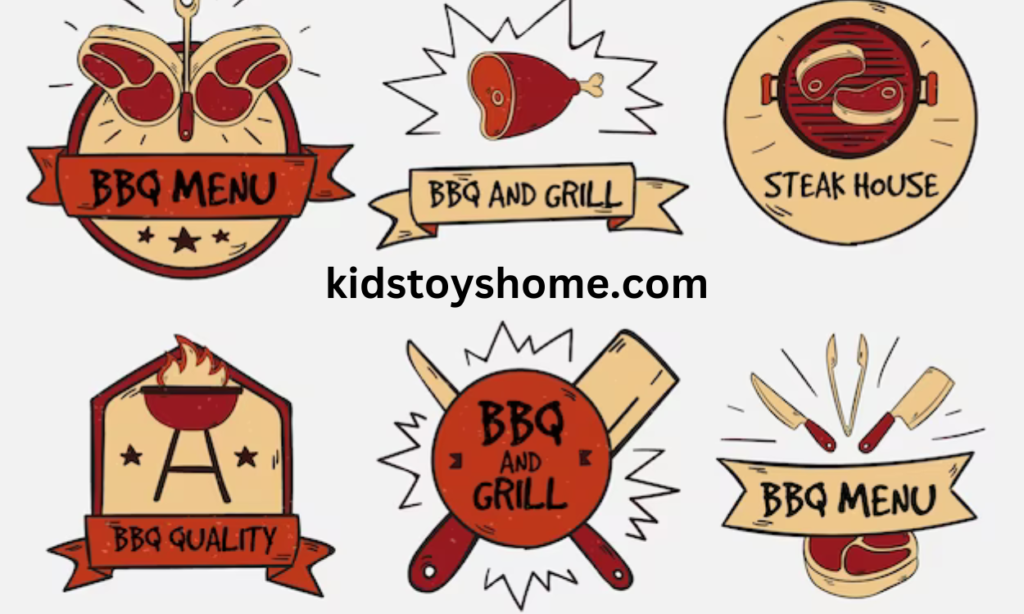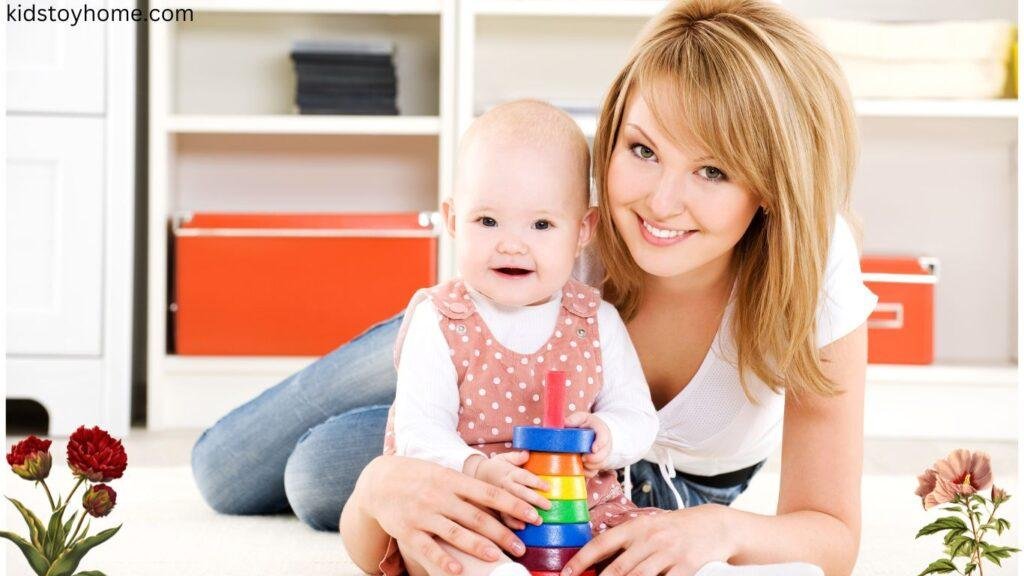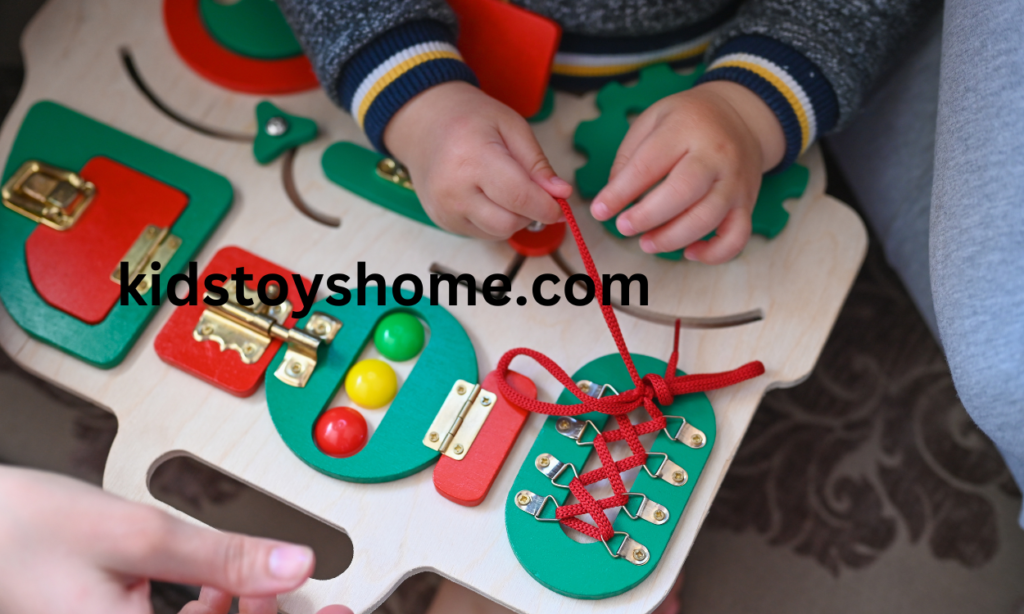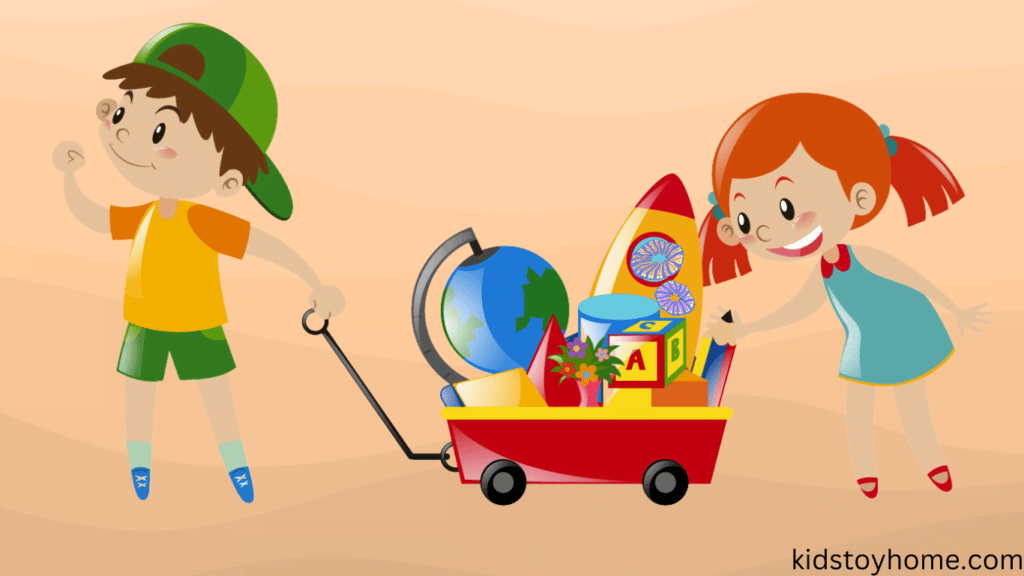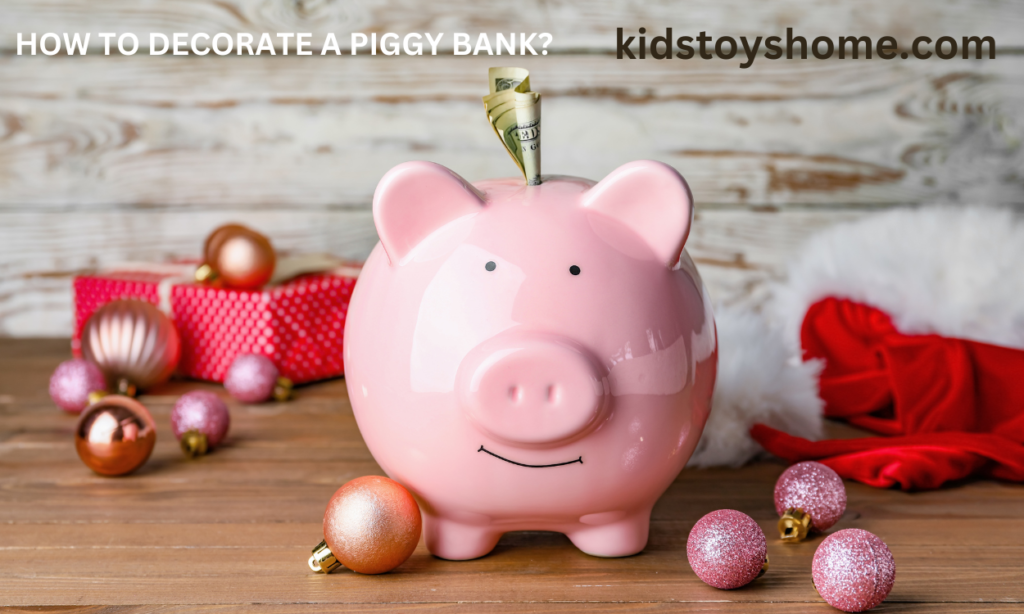Organizing children’s toys can often seem like an uphill task. Despite our best efforts to maintain order, playrooms, and bedrooms often become chaotic, with toys strewn all over the place. This cluttered environment not only creates a physical mess but also leaves children overwhelmed and hampers their ability to engage in quality play.
Implementing effective toy organization strategies can help alleviate this problem. A well-planned system will not only keep your house tidy but also make playtime more enjoyable for your kids. More importantly, it will teach them essential life skills such as responsibility, decision-making, and organization.
This guide will walk you through the process of organizing kids’ toys in a fun and practical way. We will delve into the challenges, benefits, and practical steps to help you create an organized, accessible, and engaging toy space. So, gear up to transform your child’s play experience and facilitate their development through effective toy organization.
The Challenges and Benefits of Toy Organization
The path to toy organization isn’t without its challenges. Firstly, it can be time-consuming, requiring a dedicated effort to sort, categorize, and store toys. Moreover, children’s preferences change rapidly, making it challenging to maintain a consistent system. Lastly, getting children to participate in the organization process and sustain it can be a tricky endeavor.
Despite these challenges, the benefits of toy organization are manifold. Primarily, it fosters a sense of responsibility in children as they learn to manage their belongings. Secondly, an organized play area facilitates easy access to toys, enhancing kids’ play experience. It also promotes decision-making skills, as children must decide which toys to keep and which to donate.
Furthermore, a decluttered space reduces overwhelm and distraction, allowing children to engage in meaningful play. Lastly, an organized toy system minimizes the risk of toys being damaged or lost, ensuring their longevity.
Thus, while it may require initial effort, implementing an effective toy organization system can substantially enrich a child’s play and learning experience.
Step-by-Step Guide to Organizing Kids’ Toy
The following steps show guidelines for organizing toys:
Sorting the Toys.
The first step in organizing kids’ toys is sorting. This involves grouping toys based on various criteria. It could be by type, like cars, dolls, or puzzles, or by size, separating small toys from big ones. You may also want to group toys that are part of a set. This initial sorting process is essential in laying the groundwork for a more organized toy space.
Deciding What to Keep and What to Donate.
Next comes deciding what to keep and what to donate. This can be a challenging task, especially if your child is attached to their toys. However, it is an important step in decluttering and creating an organized and manageable play area. Involve your child in this process. Explain the importance of donating toys they no longer use or need and how it could bring joy to other children. This can also be a good opportunity to teach them about empathy and sharing.
Categorizing by Type, Size, or Function.
The final step is categorizing the remaining toys by type, size, or function. You could have a bin for small toys, shelves for larger ones, and separate containers for different types of toys. For instance, all building blocks could go in one container, while all dolls could go in another.
This categorization makes it easier for your child to find their toys and also simplifies the cleanup process after playtime. This systematic approach will not only keep the play area tidy but also enhance your child’s play experience by making toy selection easier and more enjoyable.
Innovative and Fun Toy Storage Solutions.
Using Bins and Shelves.
When it comes to innovative and fun toy storage solutions, bins and shelves serve as a straightforward and efficient method. Bins are perfect for storing toys of different shapes and sizes and can be labeled to help children learn where each toy belongs. Shelves provide easy access to toys and can be used to display visually appealing items, fostering a sense of ownership and responsibility in kids.
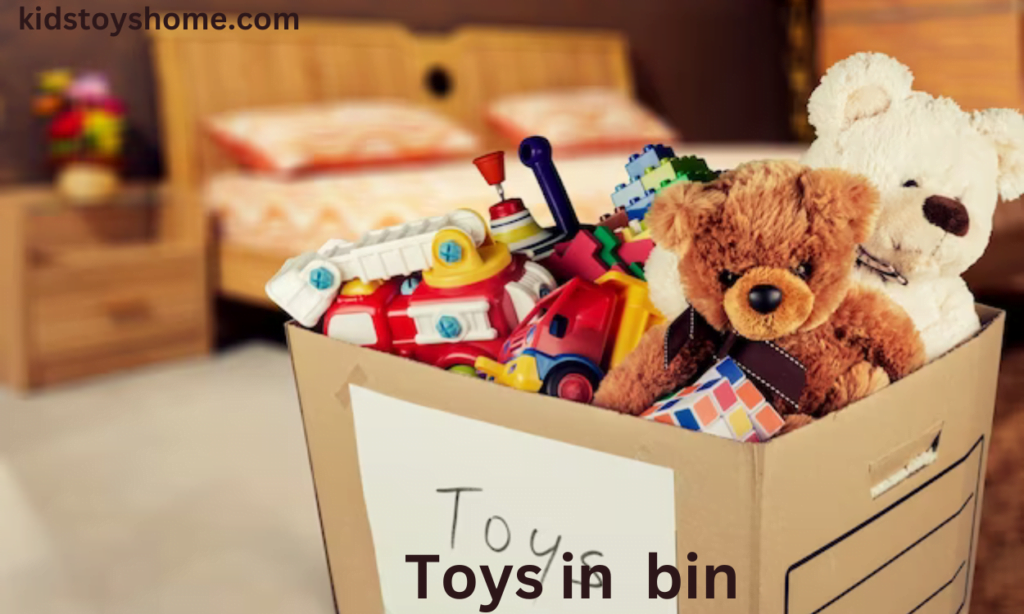
Creative DIY Solutions.
For those who love DIY projects, there are countless ideas to explore. Turning old pallets into wall-mounted toy boxes or repurposing crates to create a unique storage unit are just a couple of examples. This approach not only recycles and reuses materials but also allows you to customize the storage solution to perfectly suit your child’s play area.
Themed Toy Storage
Themed toy storage is another exciting option. Whether your child is a fan of superheroes, princesses, or animals, you can design storage spaces that align with their interests. This could include dinosaur-shaped shelving or bins adorned with stickers of their favorite cartoon characters. Themed storage makes tidying up more enjoyable and can be used as a tool to encourage children to maintain the organization of their toys.
Toy Storage Solutions and Ideas
Utilizing clever storage solutions can significantly ease the process of toy organization. Here are some creative and practical ideas you can consider.
- Repurpose Old Furniture: An old bookshelf, cupboard, or dresser can be converted into a toy storage unit. With a little bit of cleaning and perhaps a fresh coat of paint, they can add aesthetic appeal to the room while serving a functional purpose.
- Toy Hammocks: Toy hammocks can be a great solution for storing stuffed animals or lightweight toys. They can be hung in a corner, keeping toys off the floor and creating an interesting visual element in the room.
- Storage Ottoman: A storage ottoman serves a dual purpose. It can be used as a seat or a footrest while providing ample storage for toys.
- Back-of-the-Door Organizers: These organizers are excellent for storing small toys or craft materials. They come with multiple pockets, making categorizing toys a breeze.
- DIY Toy Storage: If you’re into crafts, you can create your toy storage using items like cardboard boxes, old baskets, or fabric bins. Personalize them with labels or your child’s artwork.
- Use Toy Storage That Doubles as Decor: Look for storage solutions that add to the room’s decor. For instance, a colorful toy bin or a themed toy chest can add a fun element to the room while keeping toys organized.
- Labeled Plastic Tubs: These are great for storing toys with multiple pieces, like blocks or lego sets. Clear tubs allow children to see what’s inside, and labels can help in easy identification and cleanup.
Remember, the most effective storage solutions are the ones that fit your space, your child’s preferences, and your family’s lifestyle.
Stuffed Animal Storage Ideas
Storing stuffed animals can be a tricky business, given their sizes and shapes. However, with a bit of creativity, you can effectively store them while adding an interesting element to your child’s room. Here are a few ideas you can consider.
- Stuffed Animal Zoo: This is a fun and decorative way to store stuffed animals. You can build a simple wooden frame and use bungee cords to create a ‘cage’. It’s easily accessible for children and can hold a good number of toys.
- Hanging Mesh Nets: These are a classic solution for storing light toys like stuffed animals. Hang one in a corner of the room and let it serve as a cozy home for your child’s fluffy friends.
- Bean Bag Covers: Purchase a bean bag cover and fill it with stuffed animals. This will not only help you store the toys but also provide a comfortable seating option for your child.
- Wall-Mounted Buckets: Install some attractive buckets on the wall and tuck the stuffed animals in there. It’s a great way to use vertical space and also adds a unique decorative touch to the room.
- Stuffed Animal Swing: Install a small swing in your child’s room and place the stuffed animals on it. This not only stores the toys but also makes for adorable room decor.
Remember, the best storage solution is one that keeps the toys organized while adding a playful charm to your child’s room.
Art Supply Storage Ideas
Storing art supplies effectively can go a long way in nurturing your child’s creativity and encouraging them to explore their artistic side. Here are some ideas to help you manage art supplies neatly and efficiently.
- Over-the-Door Shoe Organizer: These are perfect for sorting and storing various art supplies like markers, crayons, paint tubes, and brushes. Each pocket can be dedicated to a specific type of supply, making it easy for your child to find what they need.
- Rolling Cart: A rolling cart with multiple drawers or shelves can serve as a mobile art station. It can store a host of supplies and can be rolled around the house, allowing your child to get creative wherever they’re comfortable.
- Mason Jars: Mason jars are a simple and aesthetic way to store art supplies. They can hold paintbrushes, pencils, markers, and more, and allow your child to see what’s inside easily.
- Magnetic Board: Install a magnetic board on the wall and use magnetic containers to store small art supplies like beads, erasers, or clips. This can keep the supplies organized and also add a fun, interactive element to the room.
- Pegboard: A pegboard can be a versatile storage solution. With hooks and baskets, it can hold a variety of supplies, from scissors and tape to paints and sketchbooks.
- Art Caddy: An art caddy with compartments can hold various supplies while being portable. This allows your child to carry their art supplies around the house or even outside for plein-air painting sessions.
- Plastic Storage Drawers: These are great for storing larger quantities of art supplies. Each drawer can be dedicated to a specific type of supply, like paper, paint sets, or clay.
Remember, the key to effective art supply storage is to make the supplies easily accessible and visible, inspiring your child to create them whenever the mood strikes.
Toy Storage Boxes and Ideas
Toy storage boxes can be both practical and decorative, contributing to the organized and aesthetic quality of your child’s play area or room. Here are a few ideas to consider.
- Themed Toy Boxes: To add a fun element to the room, consider toy boxes with your child’s favorite characters or themes. Not only does this make tidying up more enjoyable, but it also adds a personal touch to their space.
- Stackable Storage Bins: These are a perfect solution for saving space. Stackable bins can be arranged as per preference and are great for storing toys of different sizes.
- Storage Boxes with Lids: These are ideal for storing toys that aren’t frequently used. Clear boxes with lids allow your child to see what’s inside without having to open each box.
- Canvas Storage Bins: Canvas bins are lightweight and can be easily moved around. They are excellent for storing soft toys or larger toys that don’t fit in other types of storage.
- Rolling Toy Chest: A rolling toy chest can be moved from room to room, making play accessible wherever your child wants to play. Plus, it makes cleaning up fun as your child can push their toys back to the storage area.
- Personalized Toy Boxes: Consider investing in personalized toy boxes with your child’s name or initials. Not only will this make your child feel special, but it will also encourage them to take responsibility for their toys.
- Cubbies: Cubbies are versatile and can be used to store a variety of items, including books and toys. They can be paired with small bins or used as is for larger toys.
Remember, the best toy storage solutions make clean-up time easy and fun for your child while keeping their toys accessible and organized.
Storage Solutions for Small Spaces
Storage solutions for small spaces are essential for keeping a clutter-free and organized environment, especially when it comes to storing toys. Here are some ingenious ideas for maximizing storage space and maintaining a tidy space:
1. Wall-mounted shelves: These shelves can be used to store toys vertically, freeing up valuable floor space. By categorizing toys and placing them on these shelves, it becomes easy to locate and organize them neatly.
2. Under-bed storage: Utilizing the space beneath beds can be an efficient way to store toys discreetly. Under-bed storage boxes or rolling containers are ideal for keeping toys out of sight while maximizing limited space.
3. Hanging storage units: These units, usually made of fabric or plastic, feature multiple pockets that can be hung on doors or walls. They are perfect for small toys and accessories, allowing them to be easily accessible while also keeping them organized.
4. Stackable bins or boxes: Opting for stackable storage bins or boxes helps to make the most of vertical space. Toys can be categorized and stored in individual containers, allowing for easy cleanup and avoiding clutter.
5. Toy storage ottomans: These multifunctional pieces of furniture provide both seating and hidden storage. Toys can be neatly concealed within the ottoman while still easily accessible when needed.
By implementing these storage solutions in small spaces, toys can be organized and stored in a clutter-free manner. This not only ensures a clean and orderly living space but also makes it easy to locate toys and promotes imaginative play without the frustration of searching for items in a messy room.
Involving Children in the Organization Process.
Involving children in the organization process is crucial for multiple reasons. Firstly, it helps them understand the importance of keeping their play area tidy and develops a sense of responsibility. It also allows them to exercise decision-making skills as they determine which toys they want to keep and which to donate.
Getting children involved can be made fun and educational. For younger children, sorting toys by color, shape, or size can be an excellent way to learn these concepts. For older children, this process can be turned into a game or challenge – for instance, who can sort their toys the fastest or come up with the most creative storage solution?
Remember to give positive reinforcement along the way, giving praise and recognition for their efforts. This will motivate them to continue maintaining an organized space. Engaging children in the organization process not only keeps their rooms tidy but also contributes to their cognitive and emotional development.
Maintaining the Organization: Tips and Tricks
Maintaining an organized toy space once it’s achieved is equally as important as the initial organization process. Here are a few handy tips and tricks that can help:
- Implement a ‘One In, One Out’ Rule: To prevent clutter from accumulating, introduce a rule where for every new toy that comes in, an old one has to be donated or discarded. This will keep the toy collection in check and teach children about sharing and letting go.
- Regular Clean-Up Sessions: Make tidying up a regular part of your child’s routine. Encourage them to put toys back in their designated spots after playtime. This not only keeps the space tidy but also fosters responsibility and respect for their belongings.
- Periodic Reviews: Conduct periodic reviews of the toys. If you notice any toys that are no longer in use or have fallen out of favor, consider donating or discarding them.
- Labeling: Labeling the storage units according to categories can help children learn where everything goes, making the clean-up process simpler and faster.
- Incentivize Organization: Reward your kids for maintaining the organization. Rewards can be as simple as praise, extra playtime, or small treats. This will motivate them to keep their play area neat and tidy.
Remember, the goal is to cultivate a culture of organization and respect for belonging in your children, ultimately enhancing their play experience and development. With consistent effort and these tips and tricks, maintaining an organized toy space will become second nature to both you and your kids. So, don’t give up on the organization process, it will pay off in the long run.
Conclusion
In conclusion, an organized toy space doesn’t just maintain order in your home; it directly contributes to your child’s development and play experience. When toys are systematically arranged and easily accessible, children can choose what they want to play with, fostering their decision-making skills. They’re less likely to be overwhelmed by an excess of stimuli, enabling focused and productive play.
Furthermore, children imbibe valuable life skills such as organization, discipline, and responsibility. An uncluttered space encourages creative, constructive play, which is an essential element of cognitive development.
Through the process of organizing and maintaining their play area, children also learn about ownership and respect for their belongings. Thus, investing time and effort in organizing your child’s toys is indeed a valuable contribution to their well-rounded development.
